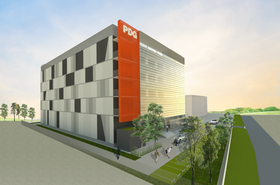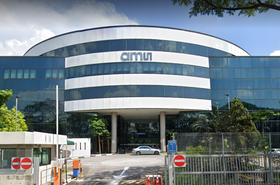To be successful in a competitive growth market like Indonesia, Princeton Digital Group (PDG) believes it’s important to ensure data center optimization so that its internet infrastructure assets are state-of-the-art and function at full capacity.
Data center optimization refers to processes and policies that lead to increased efficiency of operations without sacrificing the performance of the facility.
Since it entered the Indonesian market in 2019, with the 70 percent acquisition of the data center assets of telecom operator XL Axiata, PDG has embarked on a journey of optimization, starting with the transformation of its business processes, including both the management functions as well as data center operations.
This has aligned PDG’s Indonesian assets with global best practices in the data center industry and has helped the company become the only carrier-neutral data center service provider with presence across Indonesia.
PDG provides customers with flexibility and independence that both Indonesian digital companies, as well as global hyperscale cloud service providers, seek from their data center partners.
Indonesia is one of the most exciting growth markets in Asia. The country has a gross domestic product (GDP) of US$1 trillion as of 2020, making it by far the biggest economy in Southeast Asia. The country also has one of the world’s youngest populations, with as many as 66.5 percent of its 276.5 million people belonging to the working-age group of 15-64. This gives Indonesia significant long-term growth potential.
The country’s young and digitally savvy population drives the country’s digital transformation. This is best reflected in Indonesia’s e-commerce market growth.
Worth US$27 billion in 2018 in GMV (gross merchandise value), the e-commerce market is expected to reach US$100 billion by 2025, growing at a compound annual growth rate (CAGR) of 49 percent. This translates to US$4 out of every US$10 spent on e-commerce in the ASEAN (Association of Southeast Asian Nations) region.
As of January 2021, Indonesia had 202.6 million internet users. The number increased by 16 percent or 27 million from the previous year. Internet penetration in the country was 73.7 percent in January this year with some estimates predicting that the number of Internet users will grow to a staggering (considering the population size) 256 million users by 2025.
All this makes the country an exciting market for internet infrastructure service providers. At the same time, the market remains highly competitive and only those operators who can differentiate themselves with high levels of automation and operational efficiency can hope for long-term success.
The first challenge faced by PDG, after it entered the Indonesian market, was to transition the data center assets from one that was primarily focused on telecommunications into all-purpose state-of-the-art facilities which can cater to international customers, including hyperscale cloud service providers. The management understood that data center optimization was the way forward.
Optimization journey
Continuous optimization of operations is an essential priority for data center operators as this increases efficiency without compromising uptime availability.
Establishing firm business processes and the use of a data center infrastructure management (DCIM) solution leads to greater automation, which helps both the operators as well as customers to take advantage of being able to monitor service level agreements (SLAs) in real-time, to ensure smooth operations and reduce potential human-induced errors.
Optimization is crucial for the maintenance and improvement of systems and processes within a data center. This allows the company to quantifiably measure every aspect of the operations and improve them based on these measurements. This is a continuous process that helps to make sure all operational aspects are under control.
PDG believes it is important to build in optimization right from the design phase of data centers in the case of Greenfield projects. For Brownfield projects – like the Indonesian assets – it is necessary to incorporate optimization in every phase of management and operations.
Optimization takes care of business processes, the technology that is used, and also the suitable training of manpower to ensure all processes run smoothly.
In Indonesia, PDG uses a DCIM platform that it developed after acquiring the data center assets from XL Axiata. This platform helps to monitor all the parameters of the five data centers in real-time. This has improved the crucial PUE (power usage effectiveness) score of all the facilities and brought them closer to the ideal of 1.0.
PUE is a ratio that measures how efficiently a data center uses energy; specifically, how much energy is used by the computing servers, in contrast to cooling and other systems that support the servers.
Monitoring tools
PDG selects technology that allows it to reduce human error and prevent downtime. Good monitoring tools give PDG’s operations team an early warning on what could go wrong. This helps to maintain the SLA (service level agreements) signed with customers and also in ensuring optimum power utilization. This is a big plus for global hyperscale cloud services operators.
There are many challenges in implementing an optimization process and all these need to be factored in during the optimization journey. PDG believes that it is important to focus on five key areas: design, process, manpower, technology, and operations.
This focus helps to tackle the uncertainties that can crop up in day-to-day operations. These can range from the risk of designing an unstable business process, selecting unsuitable integration monitoring tools that are incapable of delivering the desired business outcomes, all the way to poor implementation of the existing business process and automation protocols.
Maintaining a continuous improvement also requires trained manpower as human errors can jeopardize data center business processes and automation.
While it is possible to incorporate new methodologies and technologies in existing data centers, it is best to build optimization into the design and the construction phase itself.
One of the key considerations that need to be taken into account is built-in flexibility in the design to ensure that future growth and improvement are possible.
In Indonesia, where PDG is setting up two new Greenfield data centers, it is implementing a comprehensive business process that can be applied to both Greenfield and Brownfield setups.
While developing a system for a new environment, PDG uses as a benchmark its fundamental business process that has been implemented across all the different countries that it has a presence.
Using an established business process helps PDG to deliver the same high-quality standards to its customers from different countries across Asia.
PDG has a strong commitment to build and operate to maintain excellent service reliability for all customers. The endeavour is to ensure that the business processes are simple and easy to control. This ensures that the company remains agile to adapt to future growth and scalability with stringent security for all current and future customers.
PDG has implemented automation at all possible levels to minimize human error and at the same time have a more accurate and faster response time to fluctuating operations dynamics.
More from PDG
-

Princeton Digital Group announces $150m data center in Indonesia
New data center will expand existing campus to 35MW.
-

Princeton Digital Group announces $1bn hyperscale campus in Japan
Greater Tokyo is a new market for the growing builder-operator
-

Report: Princeton Digital Group mulling $400m funding round ahead of potential IPO
Bloomberg reports new potential funding round to top up $600m raised in last 12 months


